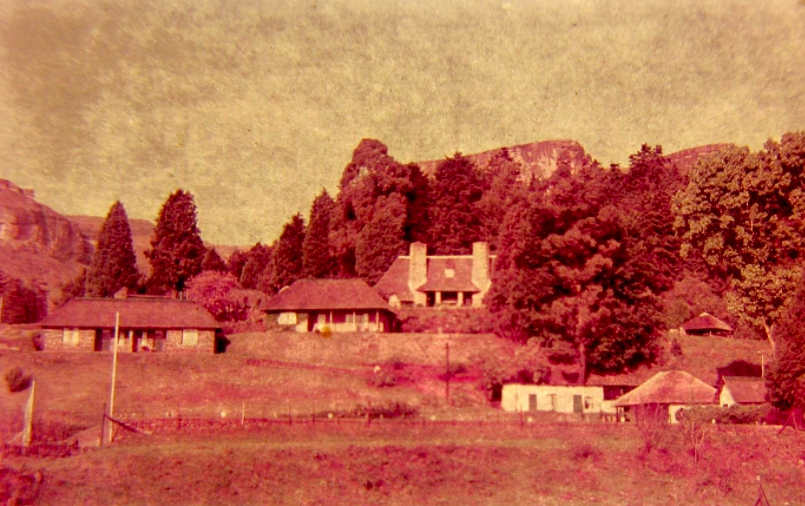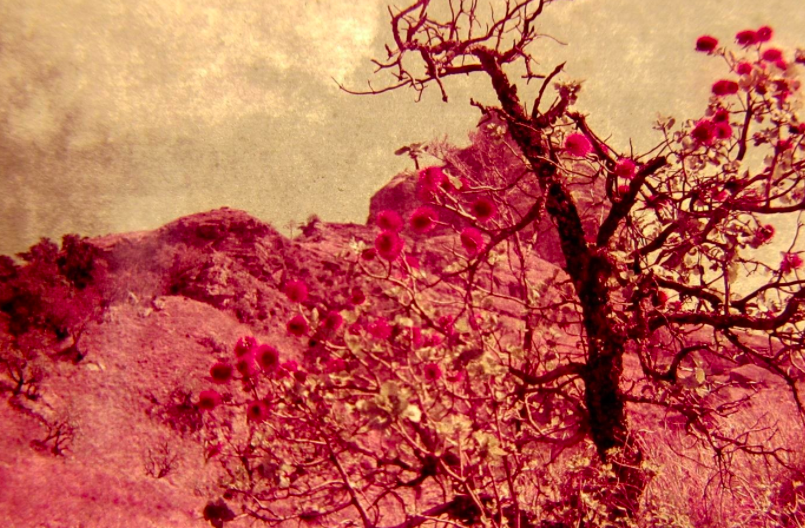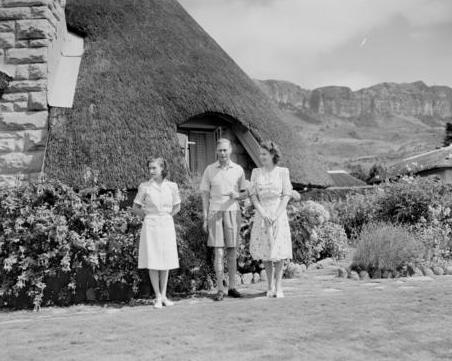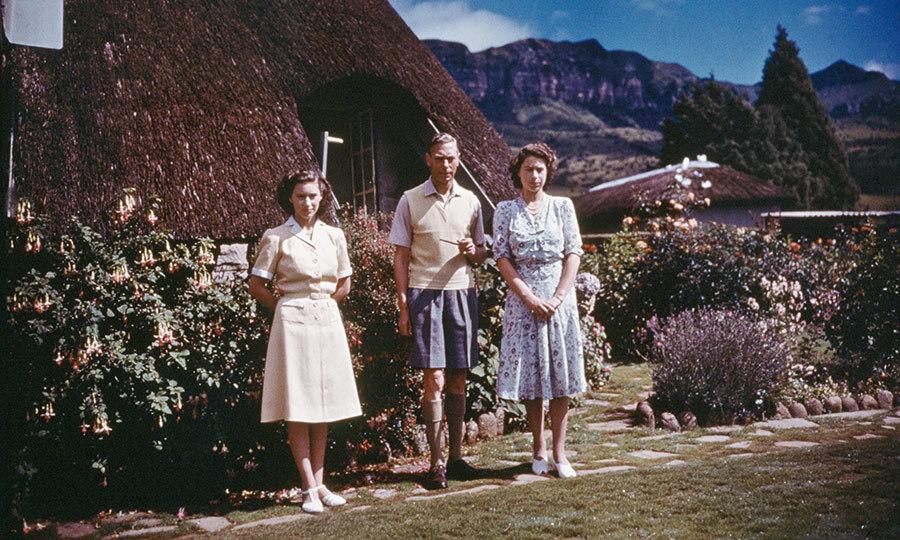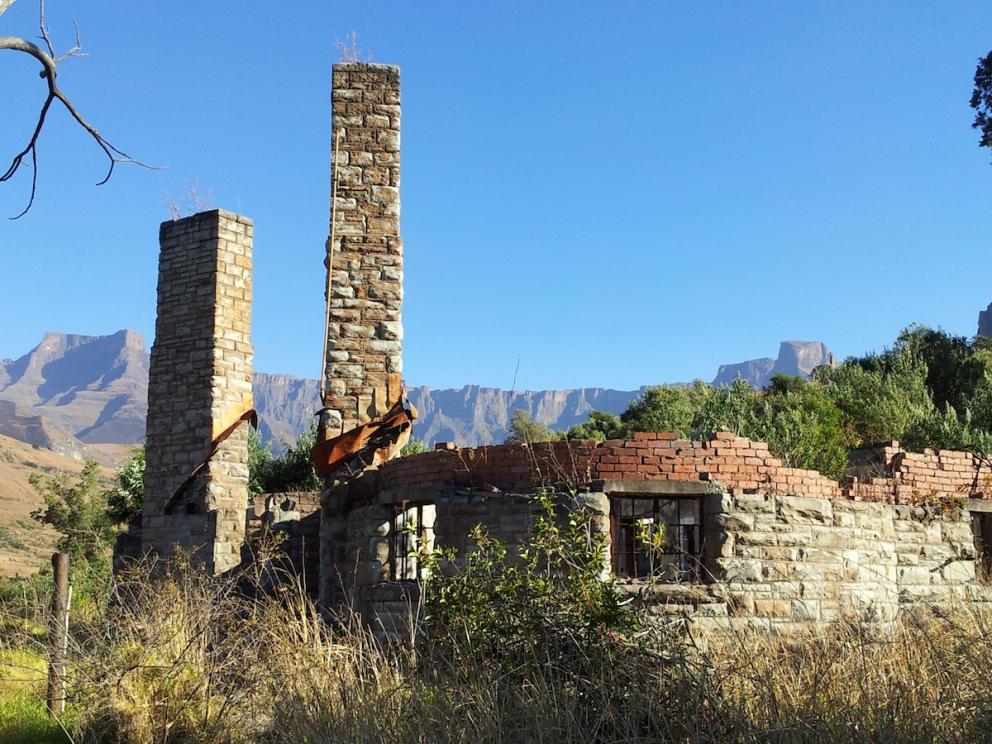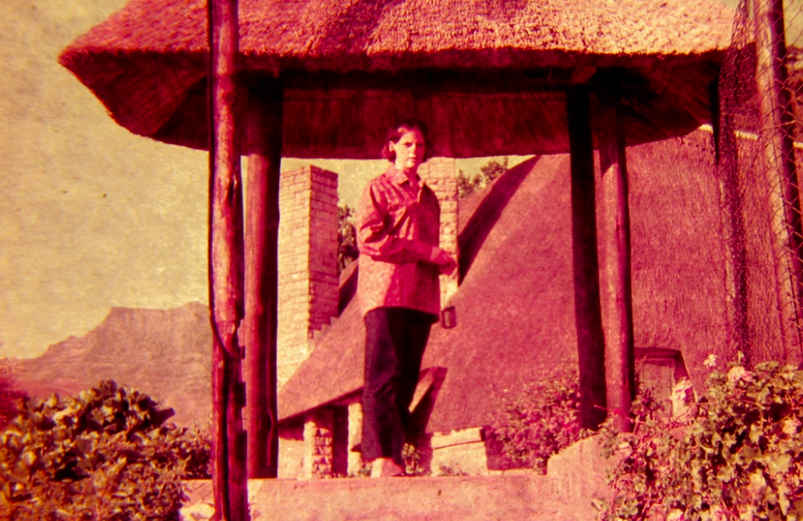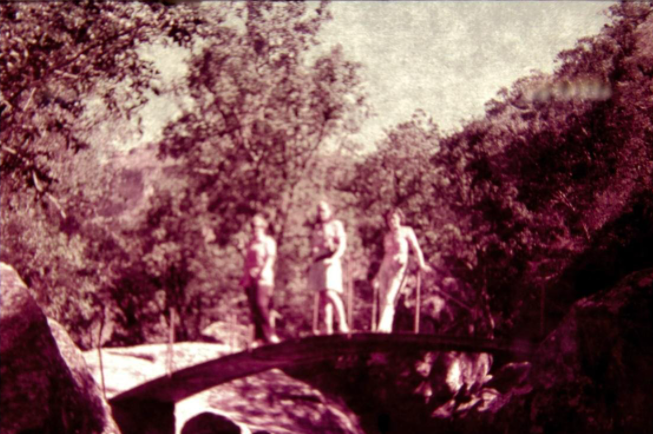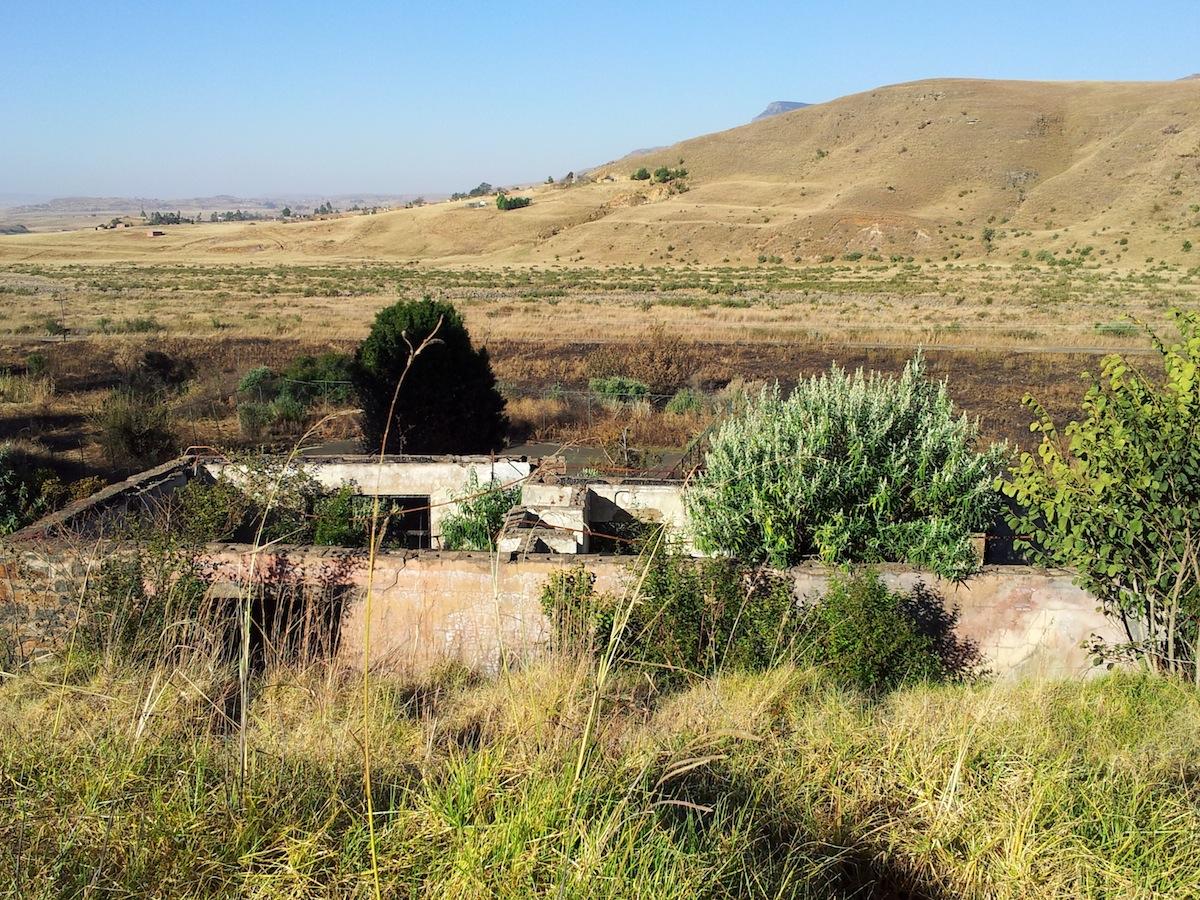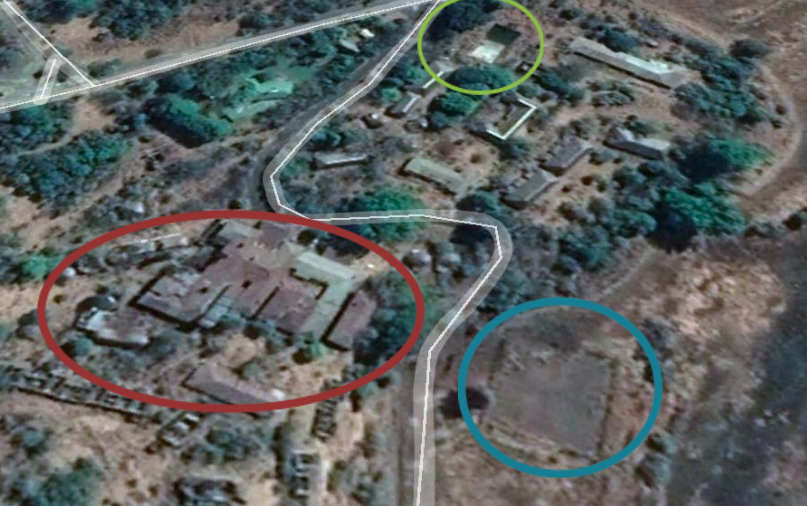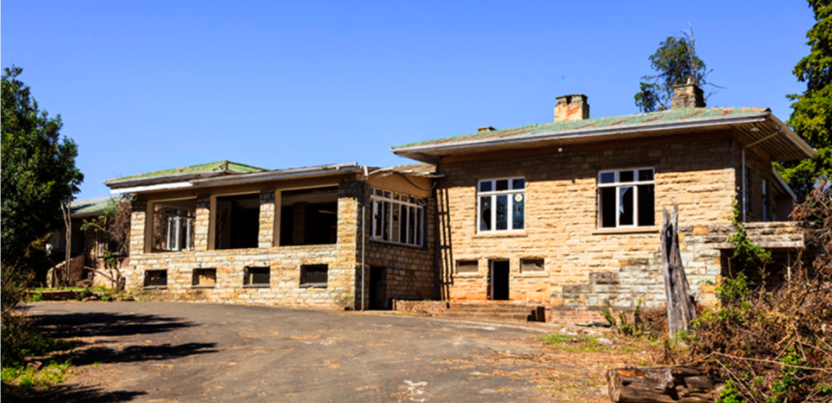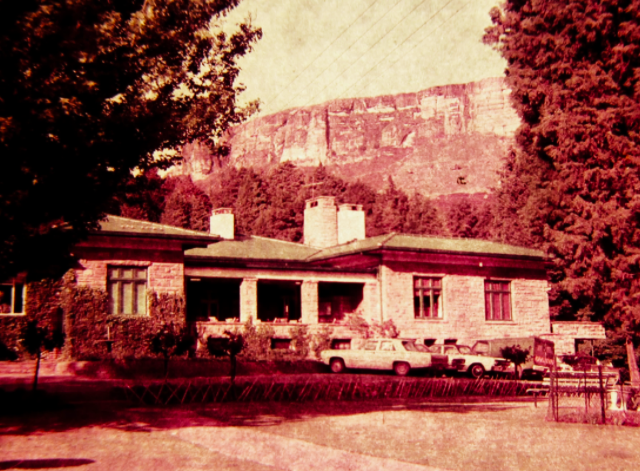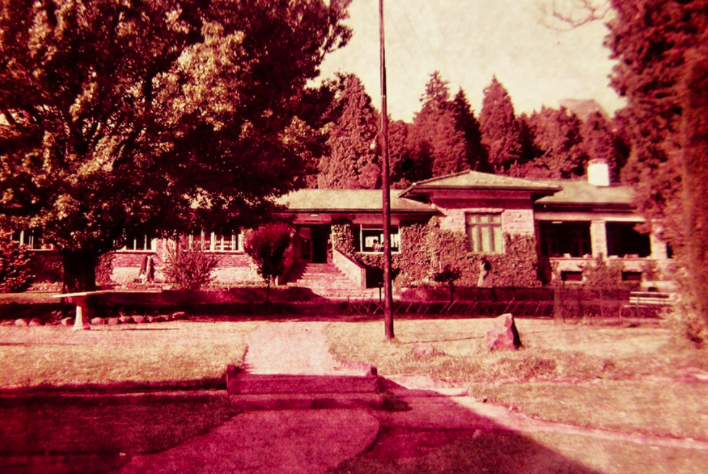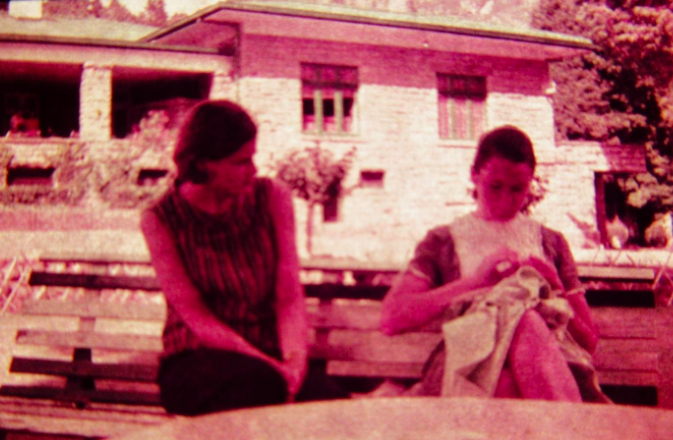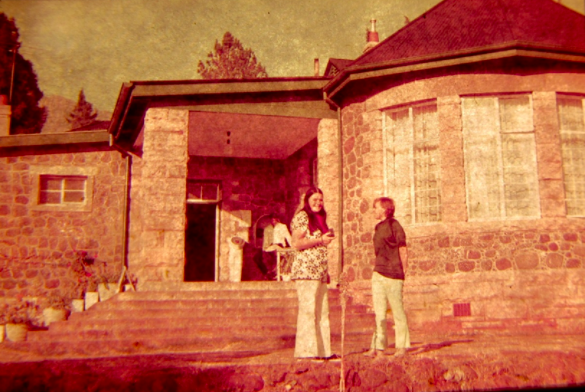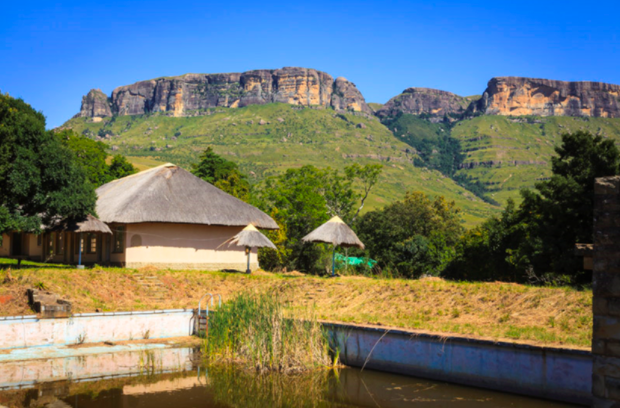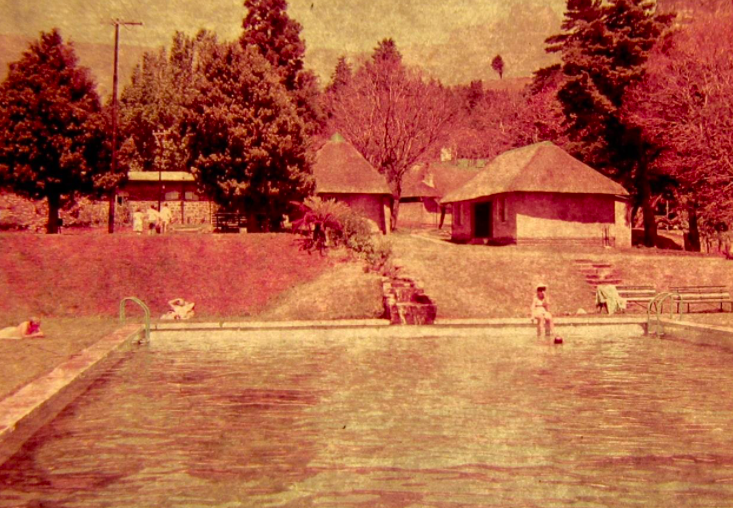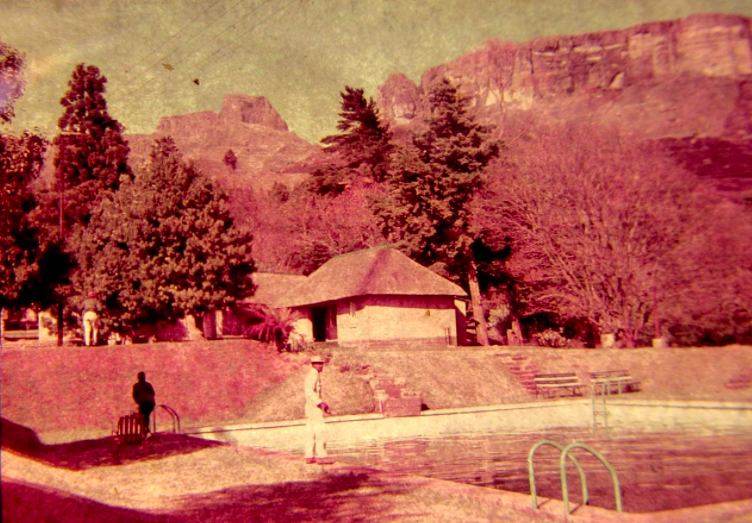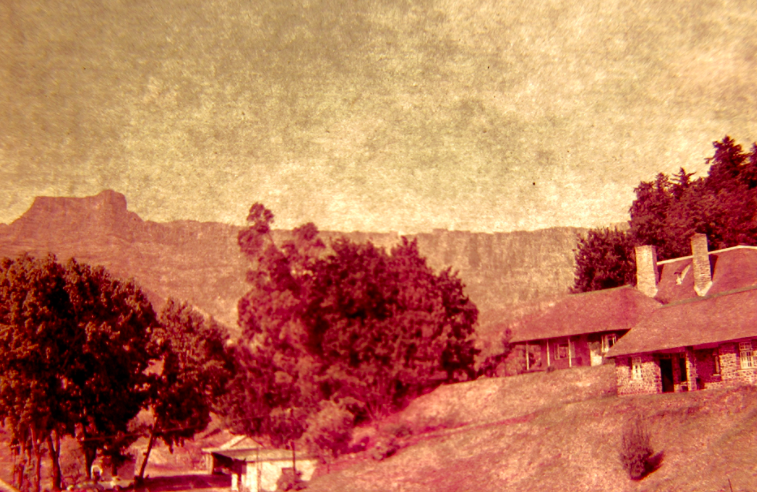
Disclaimer: Any views expressed by individuals and organisations are their own and do not in any way represent the views of The Heritage Portal. If you find any mistakes or historical inaccuracies, please contact the editor.
A fair amount has been written for the Heritage Portal about the current derelict state of the once magnificent and cosy Royal Natal National Park Hotel, with its wonderful locality within sight of the Drakensberg Amphitheatre. The story of the Royal Natal National Park Hotel (and nearby Thendele Hutted camp and the Witsieshoek Mountain Lodge) is perhaps about the challenges of keeping existing tourist assets alive during periods of social change and that there is a lack of attention by the government of South Africa to investing in tourism, despite this economic sector being one of the most promising growth sectors in almost every country in the world.
I have recently been given access to the colour slide collection of my friend’s late father-in-law, Denis James Strever, who travelled extensively in South Africa in the 1960s and early 1970s. These are some of his photographs of a family holiday spent at the famous Royal Natal National Park Hotel. In the 1970s, the Royal Natal National Park Hotel was in full swing and a lovely place to visit. Because of their age, the Agfacolor photographic slides have changed colour, becoming more magenta in the 50 or so years since they were taken. In this article, I use these photographs to contrast the hotel in its heyday with the ruin it has become, despite the excellent location within the new uKhahlamba Drakensberg National Park World Heritage Site and the Transfrontier Park.
View of the royal Natal National Park Hotel and extensive grounds in the early 1970s. The building with the two stone chimneys is clearly visible. The hotel faced north rather than south-west towards the mountain view. (Denis Strever)
The Royal Natal National Park
The Royal Natal National Park, within which the Royal Natal National Park Hotel is located, is South Africa’s first formal national park and not the Kruger National Park as is often stated (Carruthers 2013). The original Natal National Park was initiated in 1908 with the designation of four farms which were the property of the Natal government at that time. Over the following decade, additional farms were purchased, resulting in a formal protected area of some 6313 hectares. There is considerable complexity in the development and management of this national park over the years, originally having a European ‘Alpine’ outlook and being managed in the light of nineteenth century European mountain climbing lore. The early management of the park was also based on USA Yellowstone Legislation and ethos that a national park should protect the fauna and flora of the area for the people of the nation for all time.
The area was managed for its scenic value and mountains, rather than for the wildlife and in this way differed from, for example, the Kruger National Park or other ‘big five’ game parks. In the Natal National Park, visitors could get out of their vehicles and walk in the area, rather than having to remain in their vehicles. The area was much favoured by international tourists and mountain climbers and persons visiting the area saw the Drakensberg peaks as the “Switzerland of South Africa”. Over time, hutted camps and then hotels were built in the area, and roads and paths were constructed (Carruthers 2013). Today, the Royal Natal National Park is part of the bigger uKhahlamba-Drakensberg World Heritage Site listed because of both scenic and cultural (San rock art) heritage.
The mountain bottlebrush, Greyia sutherlandii, in the Royal Natal National Park (Denis Strever)
The Royal Visit in 1947
In 1947 the British Royal Family was invited to visit South Africa by the then South African Prime Minister, Jan Smuts. The Second World War had recently ended, but the world and world rulers were still reeling from the strains of the previous decade. The British royal family endured a seemingly endless roundabout of 120 official engagements in South Africa. Prime Minister Smuts saw fit to include a respite in a remote nature reserve in the northern part of the Drakensberg Mountains. The Royal visit earned the Park and the Hotel the right to be called the Royal Natal National Park and Hotel respectively.
Princess Margaret, King George VI and Princess Elizabeth in front of the then Natal National Park Hotel in 1947. The stonework to their right is part of one of the very tall stone chimneys of the hotel often seen in photographs of the now ruined hotel. (DRISA Archive)
Colour photograph of the same group in front of the big thatched roof of the Natal National Park Hotel, 1947. The appellation ‘Royal’ was given after this visit. The well laid out garden is also evident. (Hello Magazine)
The ruined main building of the Royal Natal National Park Hotel with its two stone chimneys. The low-eaves of the thatched roof seen in the photographs above of the Royal Visit have completely vanished, probably in a fire. (The Heritage Portal)
Photograph of the main thatched part of the hotel showing the two tall chimneys and the low thatched roof, early 1970s. All of this thatch has now disappeared, probably due to fire. (Denis Strever)
To allow the Royal Family to comfortably walk up along the Mahai River and view the Cascades rock pools during their visit in 1947 the Queen’s Causeway was built along the banks of the Mahai River, with a small arched bridge constructed at the end of the Queen's Causeway. The bridge still exists. (Denis Strever)
The Royal Natal National Park Hotel
The original accommodation was a small hostel for mountain climbers and was built on the homestead of Walter Coventry in 1903 and then enlarged in 1916 by Mr F C Williams. The facility was always a popular retreat for mountaineers. In December 1941 the hostel, then run by Otto Zunckel, burnt down. Zunckel rebuilt the Hostel on more spacious lines, turning it into what became the Natal National Park Hotel with its familiar cut stone facades (Eades 2013). The gardens were lovely, with tennis courts and bowling greens and a wonderful huge swimming pool, all within site of the Drakensberg Amphitheatre. Many people had glorious holidays there. For some odd reason, the view of the mountains had been ignored with the buildings facing the other way (north), despite the superb mountain setting (Douglas Morton 2012).
The current sad state of the Royal Natal National Park Hotel
Despite its earlier popularity and spectacular mountain setting, the Royal Natal National Park Hotel closed its doors in 2000 and is now in a derelict state, having been extensively vandalised and what remains is now hidden behind a forest of rank vegetation. The view of the Drakensberg Amphitheatre remains as spectacular as always! It would be very costly to restore the hotel and its facilities to a working order. The building is owned by Ezemvelo KZN Wildlife, a governmental organisation responsible for maintaining wildlife conservation areas and biodiversity in KwaZulu-Natal Province, South Africa. Prior to 1994, it was known as the Natal Parks Board. In the past, the Natal Parks Board leased the hotel to private operators, but at a certain point, this arrangement was no longer attractive as a business proposition because of unfavourable lease conditions.
The hotel struggled to cope with rising costs and greater competition during the 1980s and 1990s, and as visitors declined, the cost of upgrading the hotel became too high and it finally closed its doors in 2000. There were other complications. Doug Morton commented that the dereliction of the hotel was “the result of the then Natal Parks Board deciding not to renew the lease on the hotel except on a month-to-month basis, and the lessees felt that this was not in their interest, and withdrew. No-one else was found to carry on the operation and the slide began. Several schemes to rehabilitate the hotel have been mooted, but none has seen the light of day. I believe another study has been done and some suggestions are being contemplated. I fear that if the hotel is resuscitated it will be as a luxury destination aimed at the overseas market, and we locals will find it very difficult to afford a stay there” (Douglas Morton 2012).
One of the desolate and ruined chalets at the Royal Natal Hotel (The Heritage Portal)
Rescue plans for the hotel
An undated proposal document, produced for KZN Trade and Investment and Tourism, aimed to entice investors to take over the derelict hotel and create a world-class modern recreational facility. According to this report, the basic infrastructure is sound and while most of the fittings, doorframes, windows and baths have been removed since its closure, most of the buildings remain and the structures are generally sound. In its day, facilities that were available included a bowling green, tennis courts, a swimming pool, stables and paths into the surrounding protected area. The original hotel provided 120 beds (Redevelopment Plan, undated).
Jon Plowman in 2014 had this to say: “I was at Mahai campsite in late April 2014, and visited the site of the hotel. There is no sign whatsoever of any progress with renovations to the hotel”. The image below is from Google Earth and shows that in 2021, the hotel complex is still derelict.
Google Earth image of the ruined Royal Natal National Park Hotel. The red oval shows the main hotel buildings, the turquoise oval indicates the neglected tennis court and the green oval indicates the half empty pool. North is towards the top of the page. The L-shaped building with the green roof within the red oval relates to the photos of the main guest entrance below.
The ruins of the main guest entrance of the hotel in 2012. The green roof remains recognisable. (Douglas Morton)
Two views of the side entrance of the main hotel building (early 1970s). Note the green roof and the tall chimneys on the other side of this wing. (Denis Strever)
Friends sit in the shade in front of the main guest entrance and veranda of the hotel in the early 1970s. (Denis Strever)
Friends outside one of the entrances to the hotel. I have been unable to place this hexagonal bay window structure in relation to the main hotel buildings. (Denis Strever)
Ruined swimming pool returning to the wild. No-one swims here anymore except the frogs. (Douglas Morton)
Two views of the huge Royal Natal National Park Hotel swimming pool in the early 1970s. (Denis Strever)
Other nearby tourist destinations have survived – Or have they?
Sadly, the Royal Natal National Park and even its latest iteration, the uKhahlamba-Drakensberg World Heritage Site and transfrontier park, has never created a thriving regional tourism industry compared to nature reserves and national parks with wildlife and the Big Five. It also does not generate as much actual revenue as private game farms and game farm tourism (Carruthers 2013). More effort needs to be made to market the region as a tourist destination and ensue that benefits accrue to the local communities. The tourism offerings must also keep pace with international expectations of quality.
The nearby Thendele Hutted Camp, also within the Royal Natal National Park, has managed to survive and underwent extensive renovation some years back, moving it from a medium cost facility to an upmarket destination with a variety of options, some fairly pricey. All is not well, though, as the many negative comments about Thendele on the Tripadvisor website attest. There is a general feeling that the Thendele camp accommodation needs renovation and updating, and that the huts and chalets are no longer up to standard for the price charged.
The Witsieshoek Lodge in the same area has also managed to survive, but only just. Originally called Witsieshoek Mountain Inn, it suffered decline and abandonment following its handing over to the Batloka community in 2000 as a tourism asset. By 2010, it was in such a state of disrepair that it was closed and left abandoned. It is now managed on behalf of the Batloka by Transfrontier Park Destinations (TFPD). In 2013 it reopened as a luxury mountain lodge after extensive renovations, paid for largely by donor funds.
A view of the renovated Witsieshoek Mountain Lodge with the Drakensberg Amphitheatre in the background. (Sourced from worldabandoned.com)
Main image: View of the Royal Natal National Park Hotel in the early 1970s. In the background is the Drakensberg Amphitheatre with the Eastern Buttress on the left. Image by Denis James Strever.
About the author: Sue Taylor holds a PhD in Plant Biotechnology from the University of KwaZulu-Natal, South Africa. Her current interests encompass cities and urban greening, understanding degraded urban peripheries and researching and writing about the disintegration (and rehabilitation) of industrial landscapes and buildings. She is currently a Research Fellow at the Afromontane Research Unit, QwaQwa, University of Free State (South Africa).
Sources
- Carruthers J (2013). The Royal Natal National Park, Kwazulu-Natal: Mountaineering, Tourism and Nature Conservation in South Africa's First National Park c.1896 to c.1947. Environment and History 19(4):459-485. DOI: 10.3197/096734013X13769033133701
- Douglas Morton (2012). Click here for some of the photos of ruin, and a fascinating blog.
- James Ball (2015). A Trip Inside the Derelict Royal Natal National Park Hotel.
- Redevelopment Plan (undated). Royal Natal National Park Hotel Redevelopment Plan. Udidi Environmental, planning and Development Consultants, for Trade and Investment KZN, Tourism KwaZulu-Natal .
- Richard Eades (2013). Heritage Portal Thread
- Tripadvisor
Comments will load below. If for any reason none appear click here for some troubleshooting tips. If you would like to post a comment and need instructions click here.

